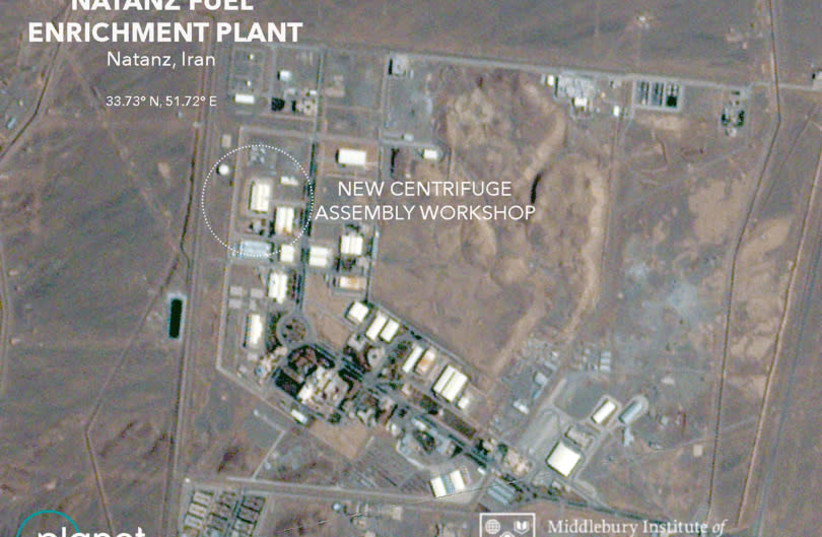Tehran has been breaching the 2015 nuclear deal in response to Washington’s withdrawal from the deal in 2018 and the reimposition of sanctions.
REUTERS TOVAH LAZAROFF

Iran’s stockpile of low enriched uranium is more than ten times over the limit set by the Iran deal, according to a quarterly report by the International Atomic Energy Agency released Friday.
Those documents showed that Iran had violated the terms of the 2015 Joint Comprehensive Plan of Action, known as the Iran nuclear deal, but that its stockpile of low-enriched uranium was still lower than it had been prior to the deal.
Iran had granted the UN nuclear watchdog access to inspect one of the two nuclear sites, after a protracted standoff.
During the inspection, the IAEA took environmental samples, one of the two reports obtained by Reuters said, referring to samples aimed at detecting traces of nuclear material that may have been present.
The agency’s inspectors will visit the other site “later in September 2020 on a date already agreed with Iran, to take environmental samples,” the report said.
The other report said that Iran’s stock of low-enriched uranium (LEU) rose by 534 kg. in the most recent quarter, roughly the same amount as in the previous three months, to 2,105.4 kg.
That is more than 10 times the 202.8 kg limit set by Iran’s 2015 nuclear accord with big powers, which Tehran has been breaching in response to Washington’s withdrawal from the deal in 2018 and reimposition of sanctions.
cnxps.cmd.push(function () { cnxps({ playerId: ’36af7c51-0caf-4741-9824-2c941fc6c17b’ }).render(‘4c4d856e0e6f4e3d808bbc1715e132f6’); });
The stockpile, however, remains far below the many tons of LEU that Iran had accumulated before the 2015 deal.
Tehran is enriching up to a fissile purity of 4.5%, which while above the deal’s 3.67% limit is still far short of the 20% higher-enriched level it achieved before the deal.
Report of the violation of the JCPOA comes two weeks after the US reported to the UN that Iran was in violation of the deal. Washington then triggered a mechanism in the deal, which would restore UN sanctions against Iran lifted in 2015 under UN Security Resolution 2231.
The sanctions relief was in exchange for Iranian compliance with the deal, but any of the six signatories to the document have a right to reinstate them should Tehran violate it.
To date, the UN Security Council has dismissed America’s demand to trigger the sanctions, a move that would mark the end of the JCPOA.
The Security Council and the remaining signatories to the deal – Russia, China, France, Great Britain and Germany – want to keep the deal intact.
The US is particularly concerned that the UN arms embargo against Iran is set to expire on October 18. The snapback of UN sanctions would include an arms embargo.
Content retrieved from: https://www.jpost.com/breaking-news/iaea-inspects-one-of-two-sites-in-iran-after-long-stand-off-641096.